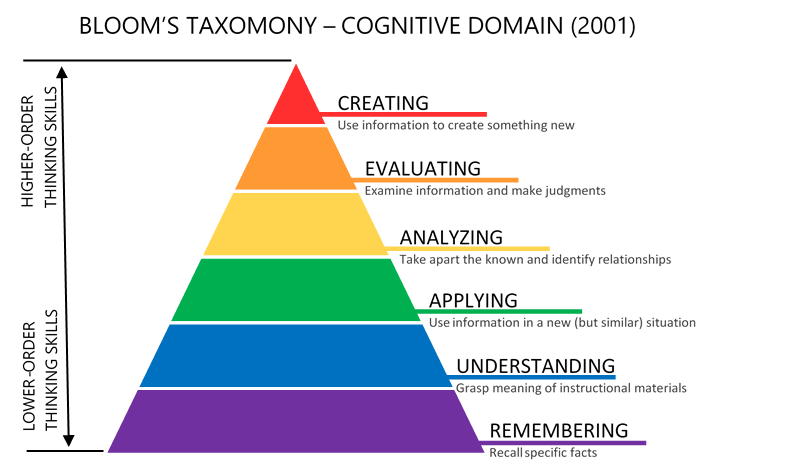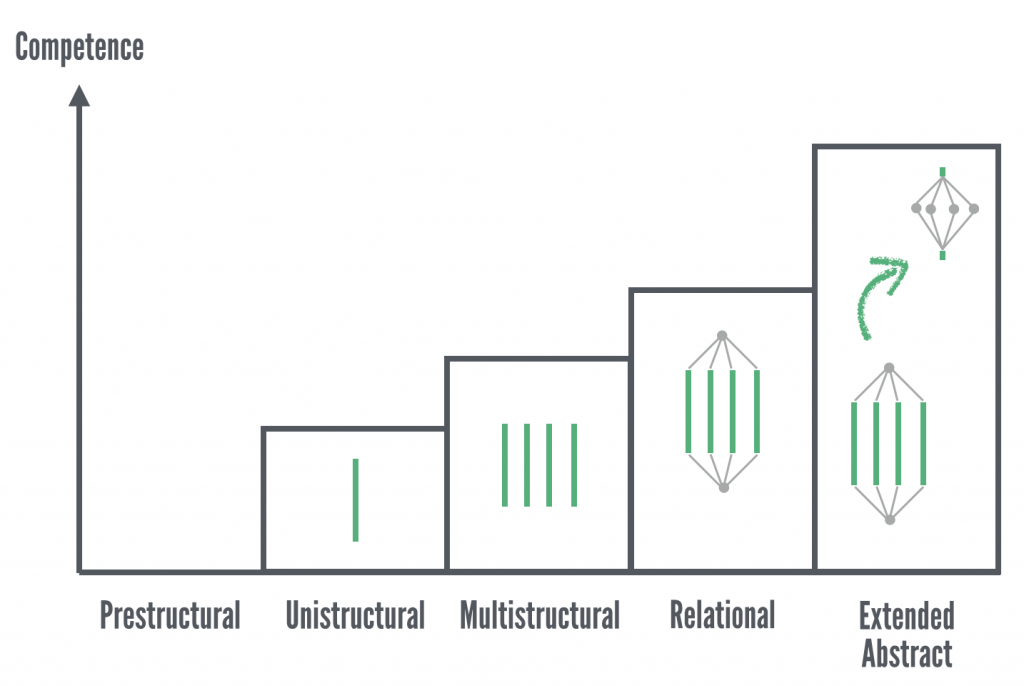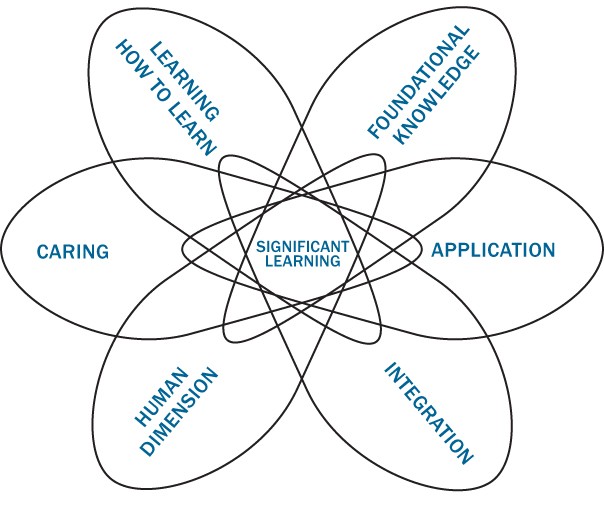EMPOWERING EDUCATORS AT
COPENHAGEN BUSINESS SCHOOL
COPENHAGEN BUSINESS SCHOOL
When designing and planning your course design, the learning goals and learning outcomes are key for a meaningful, cohesive, and integrated learning experience. Exploring different learning taxonomies – that is, classifications of different kinds of learning behavior – can support you in defining and distinguishing between different levels of learning complexity and behaviors that apply to the acquirement of new knowledge and/or skills within your course. Explore the learning taxonomies below to be inspired in your own course design process.
In 1956, Benjamin Bloom, an educational psychologist – together with a committee of educators in the USA – developed a hierarchical model of learning objectives, classified by their level of complexity. This model is what we today know as Bloom’s taxonomy, where a number of educational domains were sorted into their cognitive hierarchical order, going from knowledge, comprehension, application, analysis, synthesis to evaluation. In 2001, the taxonomy model was revised by a group of educational psychologists and instructional researchers, who not only changed the terminology from nouns to verbs, e.g., from ‘evaluate’ to ‘evaluating’, and ‘application’ to ‘applying’, but also changed the foundational structure of the taxonomy, developing a three-dimensional perspective on learning attainment. The revised Bloom’s taxonomy is what many educational researchers and instructional designers rely on today when designing and developing meaningful, constructive, and specific learning outcomes.

When writing learning outcomes based on Bloom’s taxonomy, it is important to consider the prerequisites of the students – what types of knowledge, skills, and competencies are they expected to possess at this point in the learning journey? This can help identify on what cognitive level the learning outcomes of your course and course activities should derive from. Other aspects you can consider are
REFERENCES
Anderson, Lorin W.; Krathwohl, David R., eds. (2001). A taxonomy for learning, teaching, and assessing: A revision of Bloom’s taxonomy of educational objectives. New York: Longman.
Bloom, B. S.; Engelhart, M. D.; Furst, E. J.; Hill, W. H.; Krathwohl, D. R. (1956). Taxonomy of educational objectives: The classification of educational goals. Handbook I: Cognitive domain. New York: David McKay Company.
Forehand, M. (2005). Bloom’s taxonomy: Original and revised. In: M. Orey (Ed.), Emerging perspectives on learning, teaching, and technology.
RESOURCES:
The SOLO Taxonomy (Structure of Observed Learning Outcomes) provides a visualization of various levels of cognitive understanding, complexity, and attainment of knowledge known as the surface level, the deep level, and the conceptual level. The model was developed by Australian educational psychologist John Biggs in the 1980s and is still widely used today.
The SOLO taxonomy helps support teaching when developing and classifying their learning outcomes, as well as assessment practices and activities.

The underlying assumption of the SOLO taxonomy is that we want to assess the quality of a student’s work, and not necessarily (or only) the quantity of it. As the model illustrates, the student can perform on various levels ranging between:
As shown in the model above, the SOLO taxonomy is formed by five levels in which the previous levels are a prerequisite for each new level.
The rationality behind this structure is based on the fact that knowledge builds on increasingly higher levels of complexity, where the lower levels constitute and are prerequisites to the higher levels of complexity. The prestructural, the unistructural, and the multistructural levels refer to the surface levels of learning. Within the relational and extended abstract levels, students acquire a level of deep learning, where she is able to connect the concepts taught to other problems or disciplines and can create meaningful distinctions between these.
REFERENCES:
Biggs, John B.; Collis, Kevin F. (1982). Evaluating the quality of learning: the SOLO taxonomy (structure of the observed learning outcome). Educational psychology series. New York: Academic Press.
Biggs, John B.; Tang, Catherine Sokum (2011) [1999]. Teaching for quality learning at university: what the student does (4th ed.). Maidenhead: McGraw-Hill; Society for Research into Higher Education; Open University Press.
RESOURCES:
In opposition to Bloom’s taxonomy and the SOLO taxonomy of learning, Dee Fink’s learning taxonomy is not built up as hierarchical, but rather on an interactive level. This means that one type of teaching and/or learning approach can complement other types on various levels. Fink proposes that significant learning happens when the six critical components presented below work together to supplement each other. The more key elements a teacher includes in her teaching sessions and courses, the more significant the learning will be for the students.

REFERENCES:
Fink, D. L. (2013). Creating Significant Learning Experiences, Revised and Updated: An Integrated Approach to Designing College Courses. San Francisco: Jossey-Bass, Wiley.
RESOURCES:
Guide to Taxonomies of Learning, University College Dublin
Learn more about how to write learning outcomes developing from research-based learning taxonomies here: Writing learning objectives.